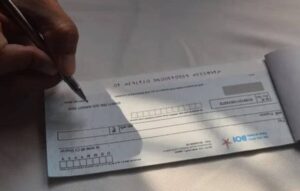After 5-Year Ban, TikTok Website Active in India but No App Access

After a five-year silence, TikTok is stirring curiosity once again in India. The popular short video platform, which was banned by the Indian government in 2020 due to national security concerns, has surprisingly resurfaced — at least partially. While the app is still missing from both the Google Play Store and Apple App Store, TikTok’s official website is now accessible for some users across the country.
This unexpected development has fueled speculation about a potential return of TikTok to one of its largest former markets. Many former users and fans have taken to social media to express their excitement and curiosity, but the situation remains far from clear.
TikTok’s website going live again has certainly set the rumor mill in motion, but the comeback appears to be far from complete. While some users in India report being able to access the homepage, further navigation reveals restrictions. Attempts to visit pages like “Newsroom” trigger a message that reads: “You don’t have access to this page. Our services aren’t available in your country or region.” Meanwhile, the “Careers” section displays a standard “503 Service Temporarily Unavailable” error.
This inconsistent access has led many to believe that the rollout — if it’s happening — might be phased or experimental. It’s also unclear whether this accessibility is intentional or simply a technical glitch. TikTok’s parent company, ByteDance, has not issued any official statement on the matter, and there’s been no confirmation from government authorities either.
TikTok was banned in India in June 2020, alongside 58 other Chinese apps including Shareit, CamScanner, and AliExpress. The ban came in the wake of escalating tensions between India and China, particularly following the deadly Galwan Valley clash that claimed the lives of several Indian soldiers.
At the time, the Ministry of Electronics and Information Technology (MeitY) declared that these apps posed a threat to the country’s sovereignty, integrity, and national security. TikTok, which had over 200 million users in India, suffered a massive blow almost overnight.
The situation was part of a larger geopolitical standoff between the two Asian giants, with digital sovereignty emerging as a key area of concern for the Indian government.
Fast forward to 2025, the geopolitical climate between India and China has seen notable shifts. With 24 rounds of diplomatic talks since the Galwan incident, both countries have relaxed border restrictions and even reinstated direct flights. Indian Prime Minister Narendra Modi is also expected to meet Chinese President Xi Jinping later this month — a signal of warming ties.
Interestingly, other previously banned Chinese platforms are also seeing limited access resurface. For instance, the website of AliExpress, the Alibaba-owned e-commerce giant, is now accessible to Indian users, although like TikTok, its mobile app remains unavailable.
On the international front, TikTok is facing scrutiny in several countries. In the US, the app is once again under threat of a ban. Former President Donald Trump — who had earlier called for TikTok’s sale — recently stated that American buyers are still interested in acquiring the platform, and he’s open to giving ByteDance more time to finalize a deal. Meanwhile, the company is undergoing internal restructuring in the UK and ramping up its AI-driven moderation efforts, laying off staff as part of this global reorganization.
So, Is TikTok Really Coming Back to India?
Despite the buzz and the limited website access, it would be premature to declare TikTok’s return to India just yet. The app’s absence from official app stores and the lack of an announcement from ByteDance suggest that no formal relaunch has been initiated.
What’s more likely is that the company is testing the waters — possibly preparing for a phased re-entry or simply restoring basic access as part of backend adjustments. With the evolving political atmosphere and changing tech policies, TikTok may be keeping its options open.
While TikTok’s partial return has certainly reignited hope among its massive fanbase in India, the situation remains murky. The platform’s website may be breathing again, but with most of its pages still inaccessible and no sign of the app in stores, it’s clear that the comeback is, at best, incomplete.
Still, in the world of tech and geopolitics, surprises are never far behind. Whether this is a quiet re-entry, a glitch, or just preparation for something bigger — time will tell. For now, TikTok’s return remains more rumor than reality, but it’s enough to set digital India buzzing once again.












